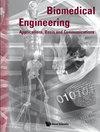基于深度学习方法的x射线图像中COVID-19和病毒性肺炎的自动检测
IF 0.6
Q4 ENGINEERING, BIOMEDICAL
Biomedical Engineering: Applications, Basis and Communications
Pub Date : 2023-02-08
DOI:10.4015/s1016237223500011
引用次数: 0
摘要
早期发现和治疗COVID-19感染对于挽救生命至关重要。本研究旨在通过胸部x线对COVID-19和病毒性肺炎肺部感染图像进行快速准确的分类。本文提出的分类器采用端到端训练方法对正常、病毒性肺炎和covid -19感染图像集的图像进行分类。提取器路径精确捕获两个感染类的特征,并将其传递到构造器路径进行精确分类。分类器利用索引和特征映射准确地重构了分类。为了确认分类结果,我们使用了马修斯相关系数(MCC)以及准确性和F1分数(1和0.5)。在MCC评分([公式:见文本])下,实现的COVID-19分类准确率约为([公式:见文本])%。该分类器在两个几乎相关的感染类别(COVID-19和病毒性肺炎)之间具有很高的精确度。统计检验表明所得结果具有统计学显著性[公式:见文]。所提出的方法可以节省肺部感染的诊断时间,并有助于减轻大流行期间医疗系统的负担。本文章由计算机程序翻译,如有差异,请以英文原文为准。
AUTOMATIC DETECTION OF COVID-19 AND VIRAL PNEUMONIA IN X-RAY IMAGES USING DEEP LEARNING APPROACH
The early detection and treatment of COVID-19 infection are necessary to save human life. The study aims to propose a time-efficient and accurate method to classify lung infected images by COVID-19 and viral pneumonia using chest X-ray. The proposed classifier applies end-to-end training approach to classify the images of the set of normal, viral pneumonia and COVID-19-infected images. The features of the two infected classes were precisely captured by the extractor path and transferred to the constructor path for precise classification. The classifier accurately reconstructed the classes using the indices and the feature maps. For firm confirmation of the classification results, we used the Matthews correlation coefficient (MCC) along with accuracy and F1 scores (1 and 0.5). The classification accuracy of the COVID-19 class achieved was about ([Formula: see text])% with MCC score ([Formula: see text]). The classifier is distinguished with great precision between the two nearly correlated infectious classes (COVID-19 and viral pneumonia). The statistical test suggests that the obtained results are statistically significant as [Formula: see text]. The proposed method can save time in the diagnosis of lung infections and can help in reducing the burden on the medical system in the time of the pandemic.
求助全文
通过发布文献求助,成功后即可免费获取论文全文。
去求助
来源期刊

Biomedical Engineering: Applications, Basis and Communications
Biochemistry, Genetics and Molecular Biology-Biophysics
CiteScore
1.50
自引率
11.10%
发文量
36
审稿时长
4 months
期刊介绍:
Biomedical Engineering: Applications, Basis and Communications is an international, interdisciplinary journal aiming at publishing up-to-date contributions on original clinical and basic research in the biomedical engineering. Research of biomedical engineering has grown tremendously in the past few decades. Meanwhile, several outstanding journals in the field have emerged, with different emphases and objectives. We hope this journal will serve as a new forum for both scientists and clinicians to share their ideas and the results of their studies.
Biomedical Engineering: Applications, Basis and Communications explores all facets of biomedical engineering, with emphasis on both the clinical and scientific aspects of the study. It covers the fields of bioelectronics, biomaterials, biomechanics, bioinformatics, nano-biological sciences and clinical engineering. The journal fulfils this aim by publishing regular research / clinical articles, short communications, technical notes and review papers. Papers from both basic research and clinical investigations will be considered.
 求助内容:
求助内容: 应助结果提醒方式:
应助结果提醒方式:


